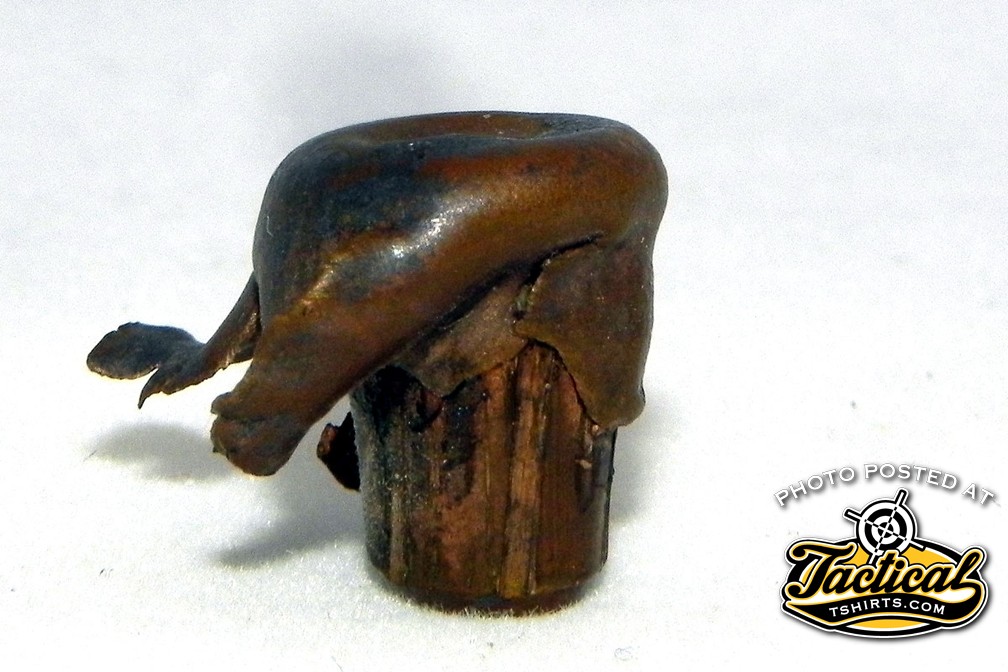
Since Marky and Freeze have gone to the trouble and expense to make is possible for you to post photos in the comments section, I thought it might be a good opportunity to solicit from you photos of your bullets recovered from game along with a few words about how the bullet performed. Who knows, over time we might end up with one hell of a bullet reference library here.

185-grain .50-cal. Swaged Lead Roundball
Despite all of the great new wiz-bang saboted bullets for muzzleloaders, what a swaged lead roundball can do to a deer is still a beautiful thing. This one was propelled by 80 grains of FFFg from a T/C Hawken right into an eight-point buck at 40 yards. The deer was quartering away me so I put the sights on its left flank and let fly. The ball went nearly the entire length of the deer and came to rest in the off-side armpit after crossing diagonally through the vitals. Needless to say, the deer dropped right there.
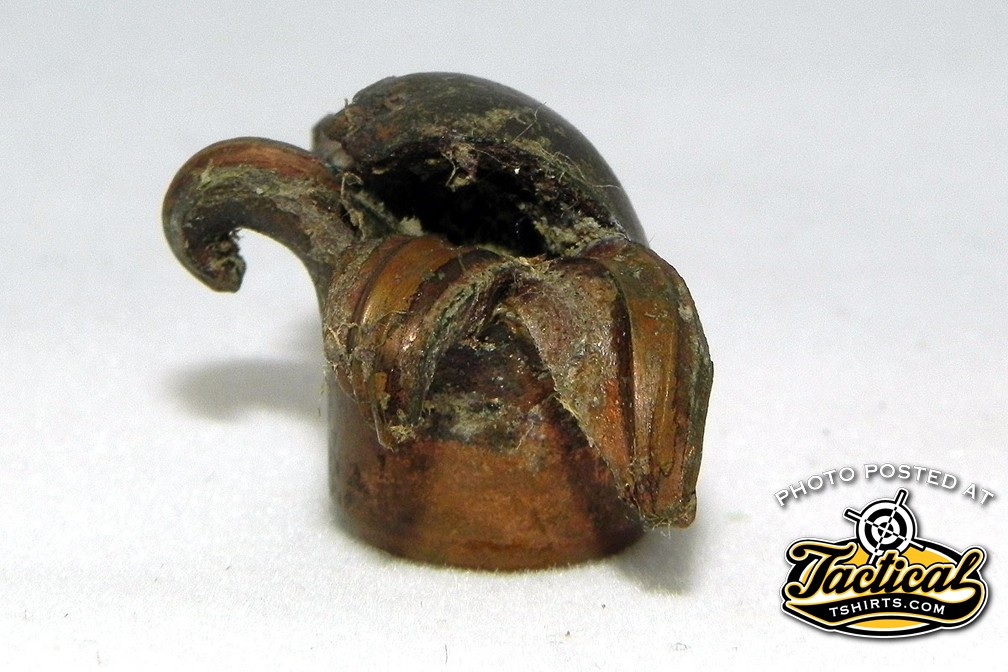
200-grain .45-cal. Knight Red Hot Bullet
Tony Knight really loved his Red Hot Bullets made by Barnes. He and I killed a lot of game together with them. This one was propelled by three 50-grain Pyrodex pellets from a Knight .50-cal. DISC rifle into a 3×3 mule deer buck at 20 yards. My notes say the bullet entered at the right hip, passed through the length of the body and was recovered under the skin in the deer’s brisket.
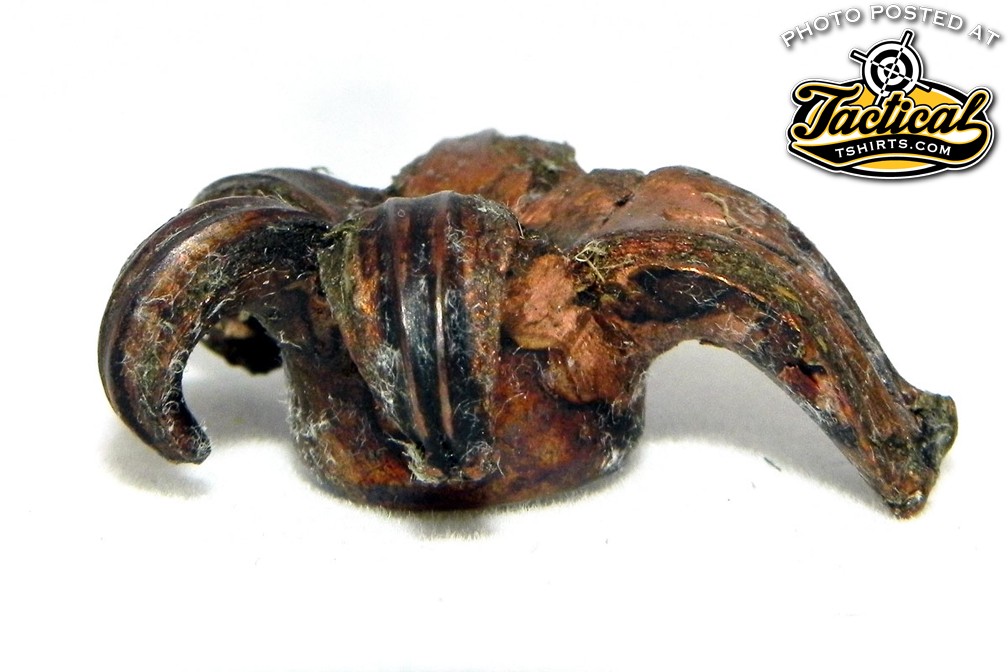
200-grain .45-cal. Knight Red Hot Bullet
Tony Knight really liked these lighter all-copper bullets because they didn’t exit. To him, it was better for the bullet to “spend all of its energy inside the game.” I think he was wrong because I like an exit wound, but I wasn’t going to argue with him. He killed a lot more game than I. This bullet was powered by three 50-grain Pyrodex pellets from a .50-cal. Knight DISC rifle and entered broadside into a mule deer at 35 yards. I recovered the bullet from under the skin on the other side. Cool bullet, and the deer dropped there so I didn’t need an exit wound to help leave a blood trail to follow.
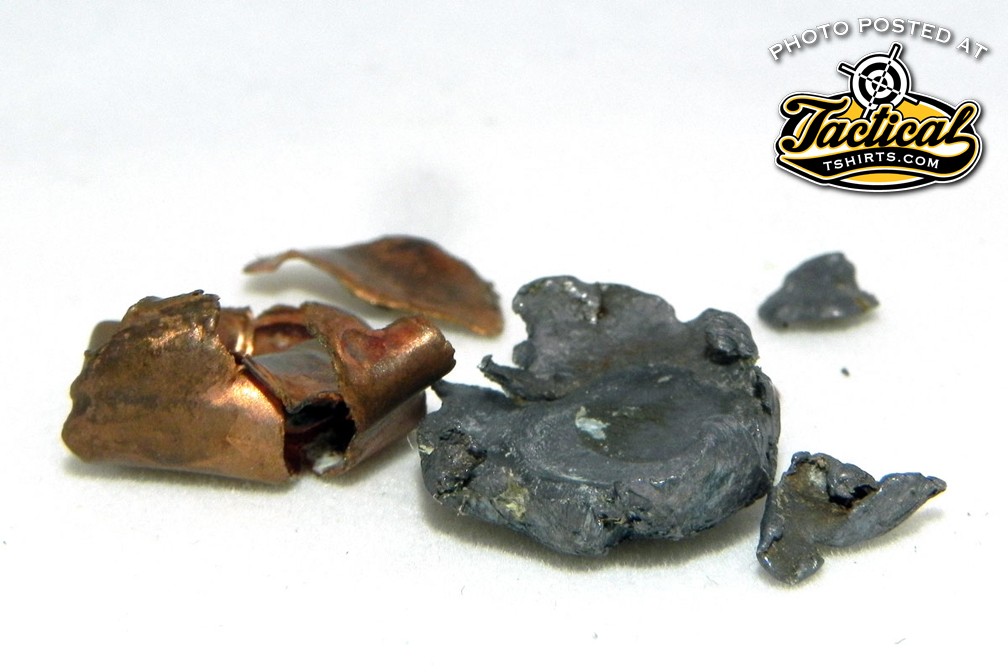
200-grain .45-cal. Hornady XTP
We did a lot of experimenting in the early days of saboted muzzleloader bullets and not everything worked so well. This is a good example. This is a pistol bullet designed for the .45 ACP and about 700 fps, but I fired it from a .50-cal. muzzleloader using three 50-grain Pyrodex pellets into a doe. My notes say the shot was at three yards! The bullet “hit the left front shoulder, destroyed the shoulder joint, shoulder bone and leg bone, took out the top 2/3 of the heart, penetrated the diaphragm, and lodged about five inches intothe liver.” The deer took two steps. Don’t use this bullet with three 50-grain Pyrodex pellets for deer—use it in the .45 ACP.
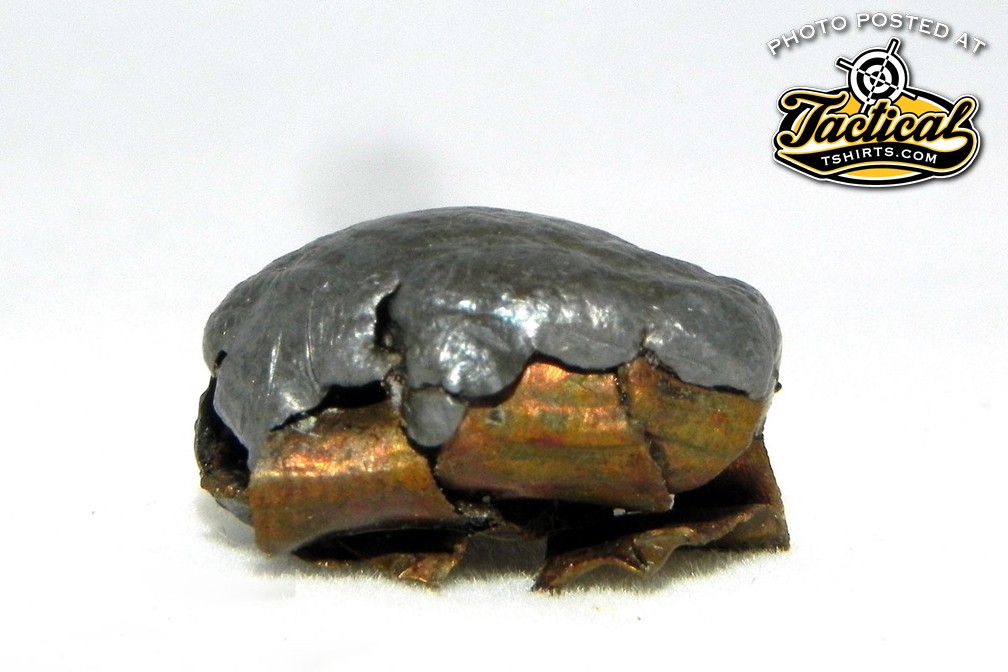
240-grain .427” Hornady XTP
This was a more successful experiment in the early days of saboted muzzleloader rounds. At the time, you could get sabots for a .50-caliber muzzleloader that took bullets intended for the .44 Magnum like this 240-grainer. With two 50-grain Pyrodex Pellets the bullet punched through both lungs and came to rest under the skin on the off side. The distance was 60 yards and the deer dropped in its tracks.

265-grain .45-cal. Swift A-Frame
This bullet took a big Nebraska whitetail using three Pyrodex Pellets fired from a .50-cal. Knight T-Bolt muzzleloader. The A-Frame has a soft front half separated from the rear of the bullet by a thick web of jacket material. At 45 yards, this bullet entered just behind the ribs on a quartering away buck and came to rest in the armpit after passing diagonally through the deer.
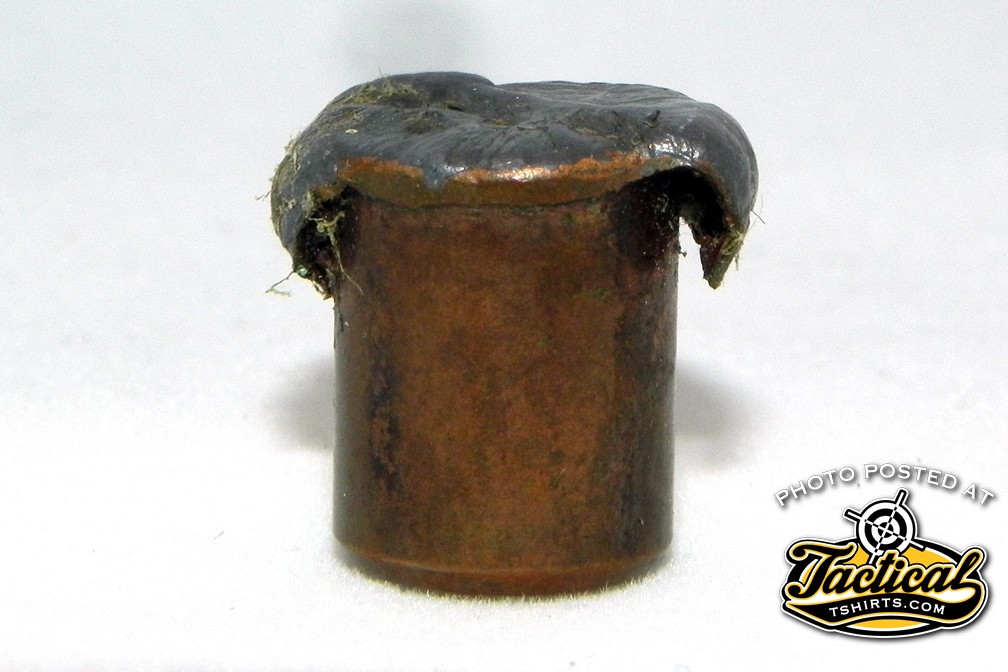
300-grain .45-cal. Swift A-Frame
When I went for elk, I upped my bullet weight to this 300-grainer. I still used three Pyrodex Pellets and a .50-cal. Knight GII DISC rifle and again I was blessed with a close shot. At 50 yards, the bullet entered just behind the ribcage on the quartering away elk and came to rest just under the skin in front of the off-side shoulder. Both lungs and the heart were wrecked and the bull went 20 yards before falling over dead.

240-grain .427” Hornady XTP240-grain .427” Hornady XTP
Here’s another example of a pistol bullet that works well in a muzzleloader. This one was propelled by two 50-grain equivalent Quickshot Pellets into a buck from 50 yards. The buck was quartering toward me and the bullet entered on the point of the near shoulder, passed through the lung, nipped the heart and center-punched diagonally through the off-side lung. The deer dropped in its tracks and the bullet was found just under the skin behind the ribcage.
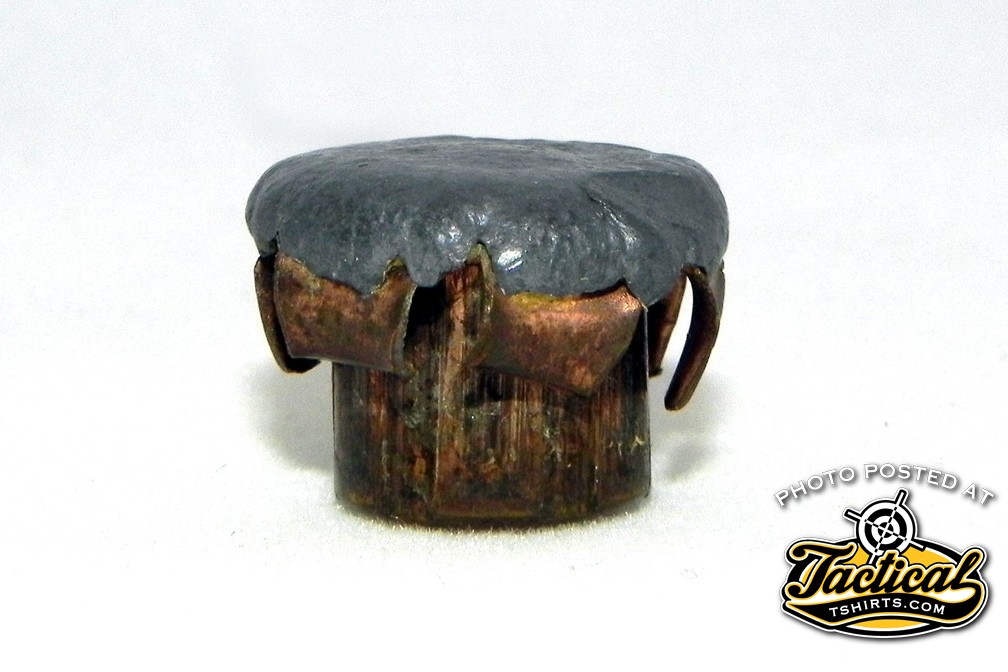
210-grain .41-cal. Nosler JHP
This bullet is from my first handgun kill using a Ruger Blackhawk .41 Magnum with 4 5/8-inch barrel. The range was 10 yards and I simply centered a broadside shot on this whitetail. It dropped in its tracks and the bullet was found in the armpit on the far side just under the skin.

140-grain 7mm Nosler Partition
This was my first experience with the Remington Short Action Ultra Mag cartridges (SAUM). I used a Remington Model 7 in 7mm SAUM to take a monster Arkansas whitetail at 40 yards. It weighed 194 pounds and was 6 1/2 years old. When I shot, the deer’s front half dropped to the ground and it “snowplowed” for about 70 yards into the woods. That must have been all on adrenaline because my notes indicate a perfect double-lung/heart shot with two broken shoulders. He should have dropped in his tracks, but the old boy still had some fight in him. The bullet was under the skin on the far side and shows perfect Nosler Partition performance where the front half of the bullet expands and causes lots of damage, while the rear half stays intact and penetrates deeply.

154-grain 7mm Hornady Roundnose
I’m nuts for almost any cartridge with an “x” in its name, so I’ve taken lots of deer with my Scout rifle in 7x57mm. All of these were recovered from whitetail and all are the same bullet and a moderate load of Reloder 15 powder. Starting from the left, my notes say the distance to the deer was about 30 yards and that the shot hit a little far forward. Both shoulders were broken and the front of the heart wrecked, yet the deer still managed to go about 70 yards.
The next bullet was a finishing shot from 20 yards. The bullet center-punched the chest broadside taking out the heart and both lungs and was just under the skin on the off-side.
The third bullet resulted in a “dead right there” shot. From 40 yards, it hit the deer in the chest between the shoulder and the sternum, traveled through the heart and off-side lung before coming to rest under the skin just in front of the off-side hip.
I have no explanation for what happened to that far right bullet. Some would call it a bullet “failure,” but I have a dead deer to prove it wasn’t. My notes say the distance was 30 yards and that I hit the quartering-away deer just behind the ribcage—textbook—but the bullet took a curved path up through the center of the deer and came to rest high up in the back of the neck. Not sure how that happens, but the deer dropped in its tracks and that’s all that matters.
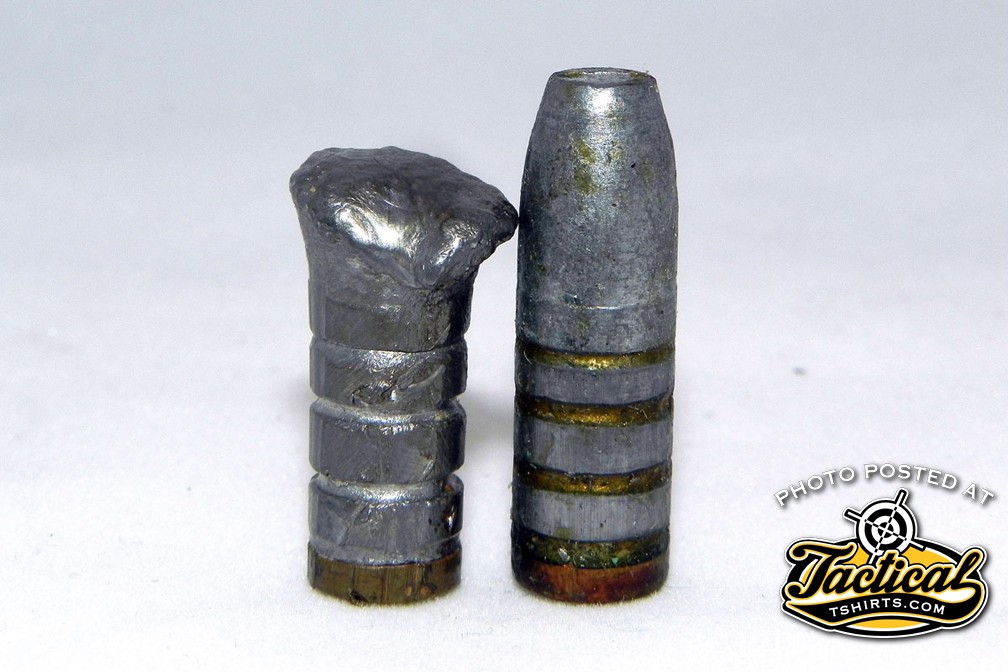
190-grain .30-cal. SAECO Flat-Point Cast Bullet
I’m “that guy” who shoots cast bullets in his .308, but my .308 isn’t a .308 Winchester, it’s a .308 CETME. Those two cartridges are dimensionally identical, but the CETME is loaded to lower pressure, hence why I use mild cast bullet loads—they’re also deadly on deer at close to moderate range. I clearly remember this deer because when I came out of the woods and stepped into the overgrown field, I was as surprised as it was to see it standing right in front of me at about 10 yards. I raised my rifle, centered the bead on thefront of its chest and fired. The bullet passed through the length of the deer, exited, and stuck about 1/8 inch into a cedar tree about 30 yards behind the deer. It’s a miracle I found the bullet, but there it is.

165-grain .30-cal. Federal Premium Spitzer Boattail
It’s tempting to call this a bullet failure because it exhibits what’s called “bananafication,” which is where the core squirts out of the jacket like a banana (really). But consider that the cartridge was a .30-’06, it was a head-on shot at 10 yards, and the bullet traveled the length of the deer before the jacket came to rest in front of the hip. That’s a lot to ask for a bullet. The deer dropped right there, but bananafication is something to keep in mind when using boattail bullets. Because the inside of the jacket is tapered into a boattail just like the outside, the core pops out more easily. It’s like having an ice cube tray with sloped sides instead of square ones. Envision that, and you’ll understand why boattail bullets more easily lose their cores.
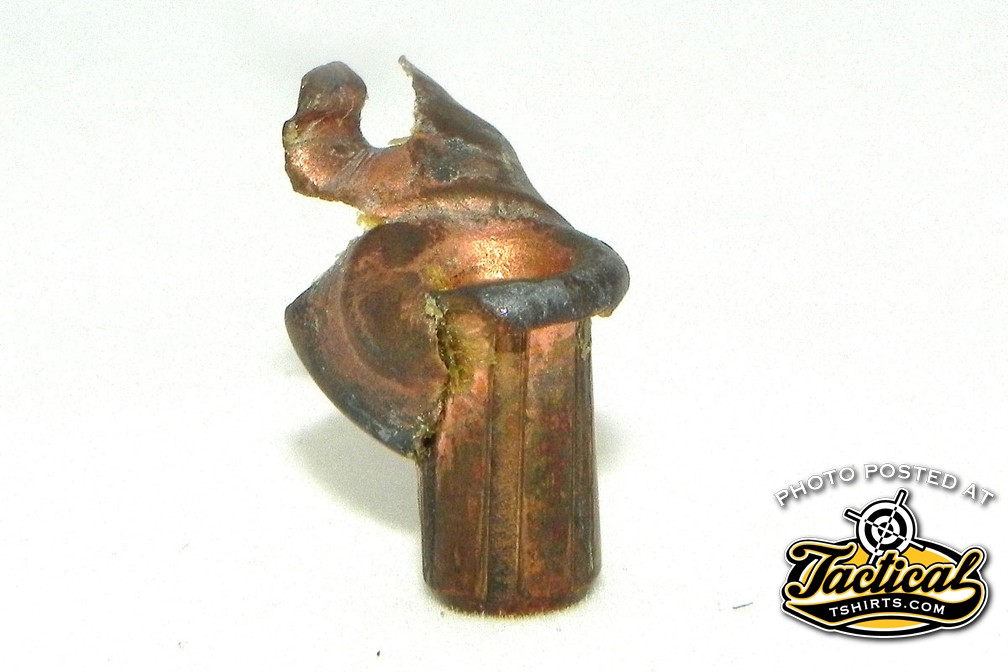
117-grain .257-cal. Nosler Partition
Here’s another textbook example of a Nosler Partition. This one is a Federal Premium .257 Roberts +P load that took a deer at about 100 yards. It was a head-on shot and my notes indicate the bullet entered to the left of the sternum and traveled in a straight line coming to rest just in front of the deer’s hip. “Bullet destroyed all major blood vessels in top of chest. Deer dropped in its tracks.”
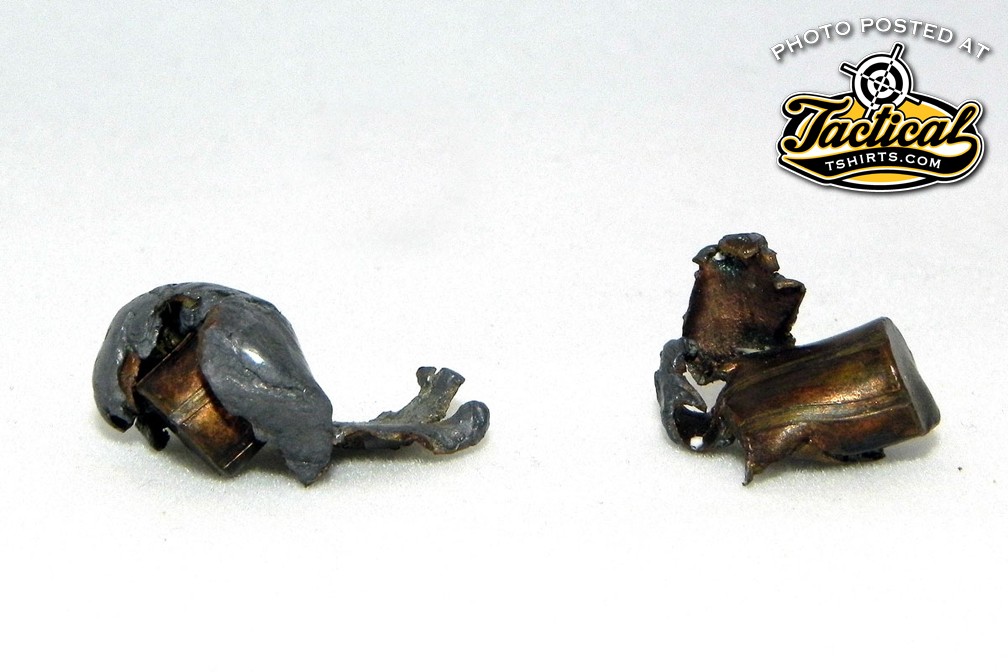
6.8 Remington SPC
I can’t remember what weight these bullets were, but they were early experimental bullets and, sorry Big Green, they didn’t do so well. Both of these bullets killed smallish whitetails, each of which were shot at about 100 yards. Even with broken shoulders and solid heart shots, both deer required quite a bit of tracking and, with no exit wound leaking blood, it wasn’t easy. I understand there are better bullets in the current commercially loaded 6.8 SPC, so these are just academic so you can see why bullets are field tested before going to market.
Scott Mayer
www.tacticaltshirts.com
www.john1911.com
“Shooting Guns & Having Fun”
- CMMG Banshee & DefCan - April 13, 2018
- Cartridges Before There Were Cartridges - May 7, 2017
- Gas Rings Seal Test - April 17, 2017





